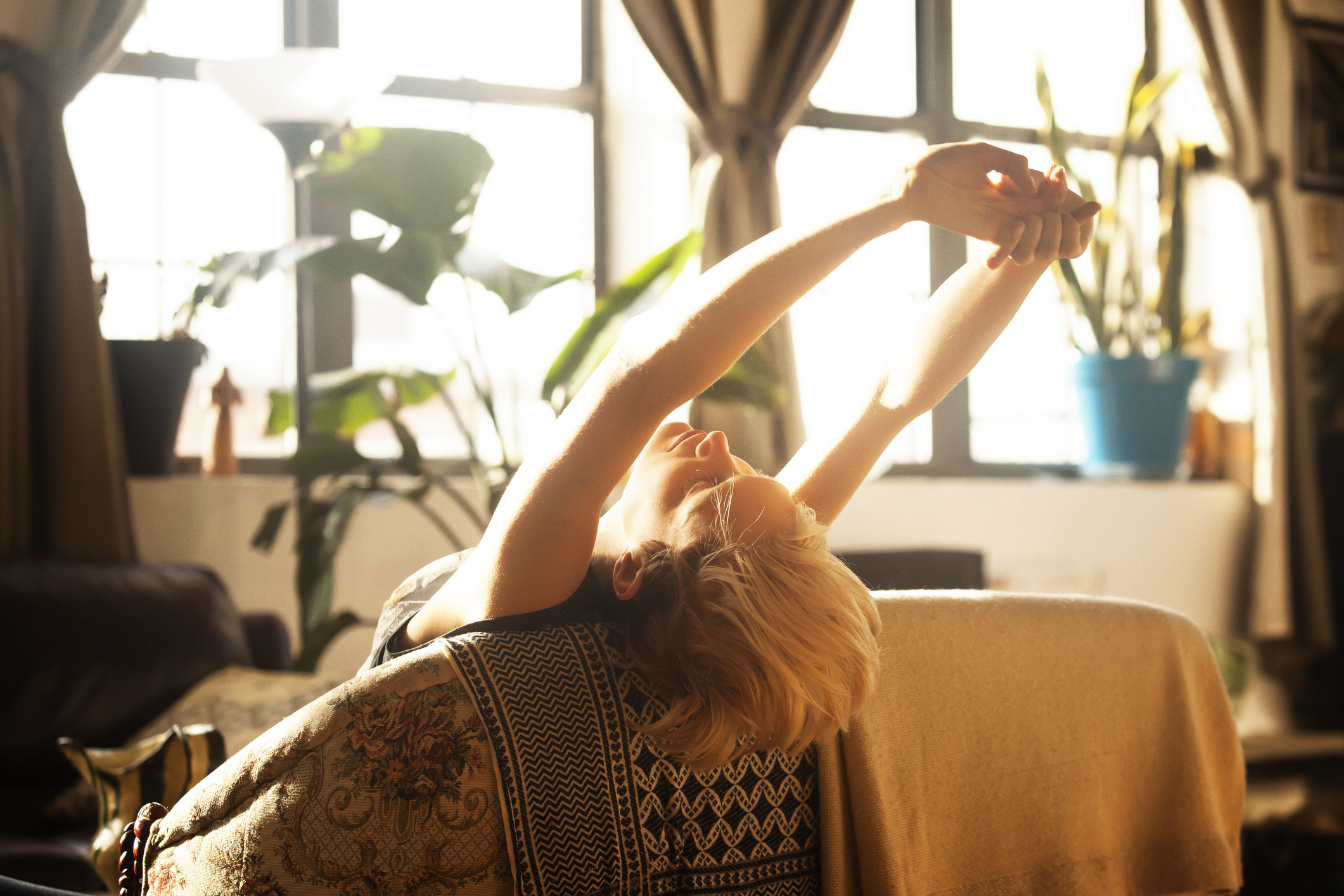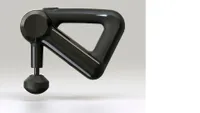Working from home: 5 BEST stretching exercises to get rid of neck and back pain
Feel free to do these stretching exercises in the office, too


Some people work from home because they can and others because they have to, thanks to the self-isolation recommendations issued by the government in response to the coronavirus outbreak. Regardless of the reason, working from home can be quite bad for your posture, especially if you haven't got a home office setup in your house. The best way to avoid any back ache or neck pain is to do some stretching exercises a few times a day when working from home (and in the office as well).
• Best home back workout: get in V-shape with ex-professional rugby player James Middleton
And not just stretching but exercising in general. Working from home is great for introducing some extra exercising to your daily routine and to improve your flexibility. You probably have the best home gym equipment in your house already and you can wear whatever you want, which means you are sporting some joggers and a loose t-shirt for most parts of the day.
• Theragun mini review: less powerful yet highly-portable percussion massager for on the go
For these stretching exercises, you won't need much equipment but you might need a yoga mat, a resistant band and maybe a foam roller. For strengthening your core, we recommend doing planks and later, using an ab roller. This simple device can help strengthening your core like no other gym equipment.
A word (or two) on safety
Stretching exercises are brilliant and also reasonably safe: you won't be lifting heavy weights above your head or do endurance exercises for hours on end. Still, it's best to know your limits and don't overdo any type of exercising, and this includes stretching too.
When you stretch, try to gently increase the tension on the targeted area and stop when you feel a gentle pull. Don't repeatedly 'dip' into the movement like we used to do in primary school. Tensing and releasing should be one long and slow movement with the maximum pull moment frozen for a few seconds. Depending on your level of flexibility, you can hold the positions for longer.
Get all the latest news, reviews, deals and buying guides on gorgeous tech, home and active products from the T3 experts
As well as stretching, you should also stand up from in front of your computer at least once an hour and have a little walk, even if it's just to go to the toilet. Even when you sit, try to keep your back straight and your core engaged as much as you can. Sitting on an exercise ball, as opposed to a chair, can help you use more muscles and to keep a straighter posture.
Best stretching exercises when working from home
1. Neck roll
Looking at a computer screen all day, especially if it's not positioned properly, can be – well – a literal pain in the neck. So much so that it can cause long term issues and not just neck- but also headaches. Apart from making sure that the hardware is placed in a position that's best for your neck, you should also move that neck around every now and then to make sure it's stay flexible (and pain free).
Neck rolls are pretty straightforward: tilt your head forward as far as you can (comfortably) and move it around, with the tip of your head doing a full circle around before returning to the starting position. Do a 3-5 circles each time.
Theragun G3 | Buy it for £375 at Theragun
The Theragun G3 comes with four attachments and provides up to 40 lbs worth of pressure to un-stress your aching muscles. Whether you are seeking relief from sitting at a table all day or because you are training for your next marathon, the G3 will effectively make you feel better. And does it in silence, being Theragun's most quiet machine yet.
2. Backward/forward shoulder rolls
Moving further down, let's focus on the shoulders now. Dropping your shoulders as you sit can make you slouch, which will make your back hurt quite a lot. Being mindful about the way you sit and opening your chest/shoulders can help alleviate upper back pain sooner.
Shoulder rolls are amazing stretching exercises because they can be done without even lifting up your hands from the keyboard. Of course, as I said before, it's best to stand up from the computer and have a bit of a walk around but if you ever notice you started slouching as you sit, feel free to do some backward shoulder rolls.
First, lift your shoulders up as high as you can: just like how you would if you wanted to give someone the biggest shrug in the world. Then, slowly roll your shoulders back and around, pushing them to their maximum position in each direction. Once you've done 3-5 circles, change the direction and roll the the shoulders forward. Do forward shoulder rolls for 3-5 times.
Fitbit Ionic Fitness Smartwatch | Sale Price £185 | Was £249.99 | You save £64.99 at Amazon UK
The Ionic is much like the Versa, but with a bigger screen and it comes with integrated GPS too. The Fitbit Ionic is also water rated to 5 ATM, supports contactless payments and can store music on the watch itself. As such, the Fitbit Ionic is the best Fitbit for more serious outdoor exercisers.
3. Chest opener
This is another upper back/shoulder stretch to help you alleviate the effect of slouching. Doing chest openers can also improve shoulder flexibility which is vastly ignored by adults in general. If you would like to test just how inflexible your shoulders are, have a go on the monkey-bars at the nearest playground. It is guaranteed your shoulders will ache, maybe straight after but definitely the next day.
Join your hands behind your lower back which in turn will open up your chest and shoulders. Without bending your elbows, try bringing your hands up as high as you comfortably can. If you are standing, keep your feet shoulder width apart and and bend your hips forward as you bring your arms up. That would effectively stretch your lower back too!
Fitbit Aria Air Smart Bathroom Scale | Buy it for £50 at Argos
Track changes in your weight and BMI using the Fitbit Aria Air. All data is fed back to the Fitbit App where you can further analyse all your body metrics using easy-to-understand charts. The Fitbit Aria Air runs on three triple-A batteries and measures weight up to a 180 kilos (that's around 28 and a half stones).
4. Spine twist
Spine mobility is largely ignored in general which is sad because a mobile spine can mean the world in terms of general comfort levels. Our spines are made out of individual vertebrae, not a solid pole, but given how well people can twist their spines you would think it was the latter that's true.
If you are sitting on a chair, turn your shoulders around and grab the top of the chair with your hands and pull your shoulders around your back as far as you can without moving your hips. Hold this position for five seconds and then return to the starting position. Repeat the other way around.
If you sit on an exercise ball when you work (go you!), join your hands in front of you with your elbows bent and turn around, pulling your shoulders with your hands.
Percko Lyne Fit Sports T-Shirt | Buy it for £109 at Percko
The Percko Lyne Fit t-shirts' tensors accompany your body’s movements during exercise to readjust your posture. Lyne Fit helps you realign your spine and free your diaphragm. The Lyne Fit won't won't replace your chiropractor but it will help slightly pulling your shoulders back so you don't slump as you workout.

5. Hamstring stretch
Tight hamstrings are the main source of posture issues and discomfort. Many people find it difficult to touch their toes which for whatever reason is the first thing that is being tested when it comes to checking one's level of flexibility. Working and loosening the hamstrings takes a while but in return, you will be rewarded with better sleep, better posture and less back pain.
Best way to stretch your hamstrings is to lay down on a yoga mat, lift up one of the feet and extend your leg, loop a resistance band around your feet, holding both ends of the band in your hands. Inhale first, holding the leg in a gentle pull position then as you exhale, pull the bands a bit more to stretch the hamstring.
Don't pull your leg too much, just as far you can comfortably. Keep your hips on the floor and move only the leg as you stretch. Once you did 2-3 pulls on one leg, repeat on the other.

Matt Kollat is a journalist and content creator who works for T3.com and its magazine counterpart as an Active Editor. His areas of expertise include wearables, drones, fitness equipment, nutrition and outdoor gear. He joined T3 in 2019. His byline appears in several publications, including Techradar and Fit&Well, and more. Matt also collaborated with other content creators (e.g. Garage Gym Reviews) and judged many awards, such as the European Specialist Sports Nutrition Alliance's ESSNawards. When he isn't working out, running or cycling, you'll find him roaming the countryside and trying out new podcasting and content creation equipment.



